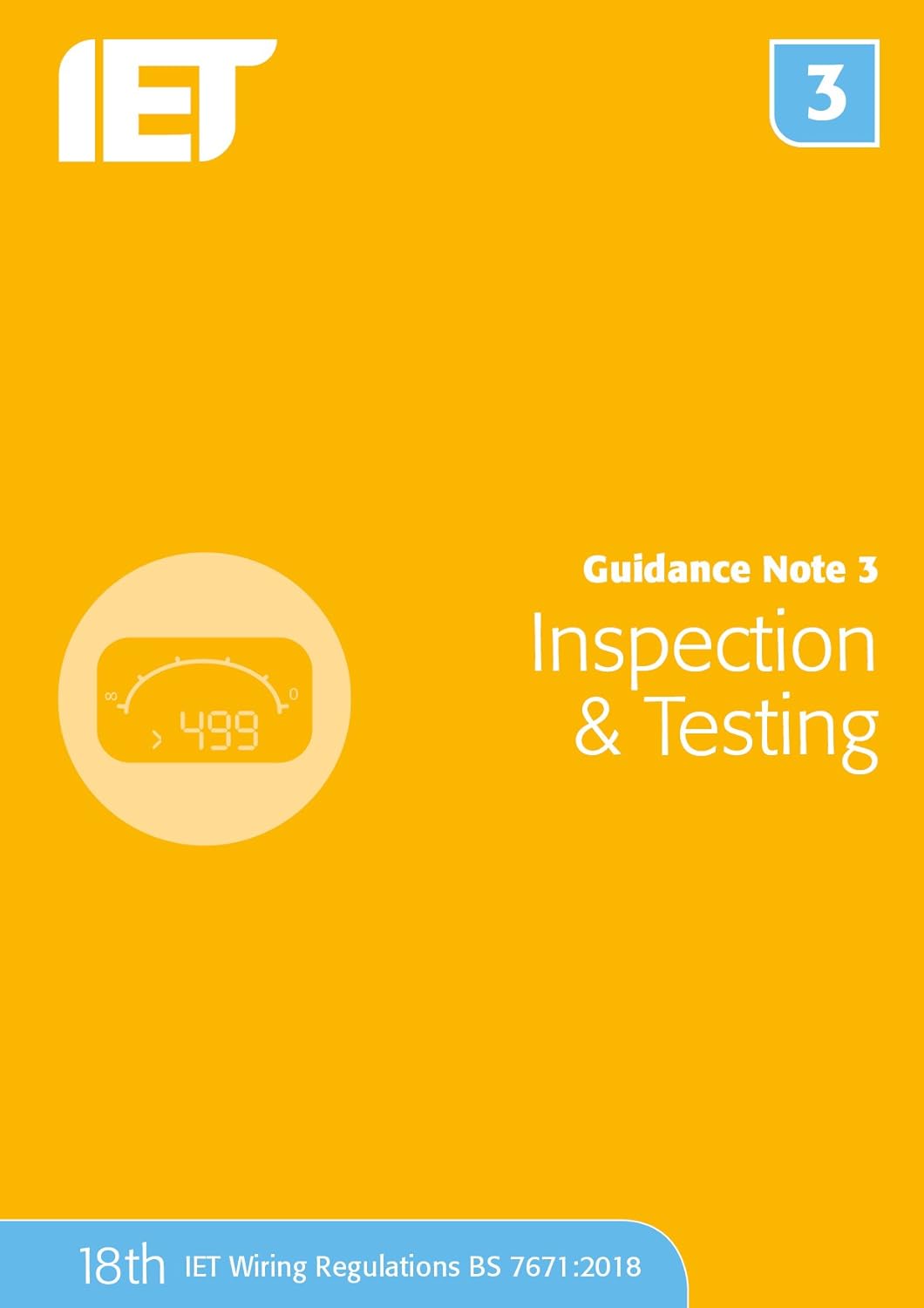About this deal
Regulation 544.1.1 concerning main protective bonding conductors has also been revised. Chapter 55 - Other equipment Regulation 422.2 now introduces separate requirements for escape routes and a new concept of 'protected escape routes'. Reference to conditions BD2, BD3 and BD4 has been deleted. Chapter 44 - Protection against voltage disturbances and electromagnetic disturbances
I suggest you go and measure Zs on a real system with a real meter early in the morning, then go out for lunch and polish the meter probes and re-test with the same meter at the same point in the afternoon. The two readings will be both as valid, but are unlikely to be the same in all digits. As an aside what meters do you suggest with this accuracy (not precision) ? Note that two half lengths of meter lead is a good few milli-ohms on its own. I have used both Fluke and Meggar machines and neither is this good.I would like to express my great appreciation to the following individuals for their valuable contributions to this article. Any observations noticed by the inspector during the inspection and testing is required to be recorded on an Electrical Installation Condition Report (EICR) and a classification code attributed according to the degree of urgency. Modifications have been made to Regulation Group 543.7 concerning earthing requirements for the installation of equipment having high protective conductor currents. Regulation Group 643.3 has been redrafted. The requirements for testing insulation resistance where equipment is likely to influence the verification test or be damaged has been clarified and reference is made to a 250 V DC test following the connection of equipment. Regardless of RCD type, e.g. AC, A, F or B, an alternating current test shall be used at the rated residual operating current (I Δn), with a maximum operating time not exceeding 300 ms for general non-delay type RCDs.
The technical content of this section has been extensively revised and expanded. Requirements of this section now apply to: Section 411 contains a number of significant changes. Some of the main changes are mentioned below. To demonstrate competence, inspectors will need to have a high level of experience and knowledge of the type of installation to be inspected. They will also further demonstrate that they have undergone training and education in inspection and testing with evidence of qualification(s) from a recognised examining body. Each manufacturer’s instrument is different but changing the RCD Type is usually selected by pressing the relevant ‘function’ button on the instrument and the RCD Type symbol will change accordingly: see Figure 2. Most instruments will include a function to test general non-delayed and S Type time-delayed Type AC and Type A RCDs, some test instruments may also include a facility for testing other Types such as Type B RCDs.
How updates are published
However, it is important to remember that Table 3.2 is titled ‘recommended initial frequencies of inspection of electrical installations.’ The first important word is ‘recommended’, it is exactly that, a recommendation and not a legal requirement. It is also important to note that this is for initial frequencies for new installations. It is worth noting that for domestic rented accommodation and houses in multiple occupation, the recommended maximum period between each inspection and test is five years or change of occupancy, which is often overlooked.
Predicted measured resistance = r y//r g = 0.5762×0.4264 ÷ (0.5762+0.4264) = 0.2451 Ω Step 3, resistance at Test Point 6 V low voltage rated bathroom fans are permitted in zone 1 of the bathroom. All circuits must be RCD protected Regulation 411.3.3 has been redrafted and now has three indents. There is still an exception to omit RCD protection where, other than BA1, BA3 or children (BA2, BA3) and mobile equipment (not exceeding 32 A) for use outdoors, a suitably documented risk assessment determines that RCD protection is not necessary. BS 7671:2018, Tables 41.2, 41.3, and 41.4 indicate the maximum earth fault loop impedance values, it’s important to note that these are the maximum values which should not be exceeded when the cable is at it’s assumed conductor operating temperature (70c). Whilst BS 7671:2018+A2:2022 doesn’t require other types of RCD testing, however additional tests are not precluded and may be useful for fault finding purposes, these tests could include:
On-Site Guide (BS 7671:2018+A2:2022) 8th Edition
NOTE 2: Regulation 16 of the Electricity at Work Regulations 1989 requires persons to be competent to prevent danger and injury. The HSE publication HSR25 provides guidance on this.’ It is very important to note that Regulation 621.2 requires the installation to have a “ detailed examination” and that examination is to be “ supplemented by appropriate tests”. It is essential for persons engaged in inspection and testing to understand that the inspection is more important than the testing.
Regulation 443.4 for determining if protection against transient overvoltages is needed has been redrafted. Regulation 443.4.1 now requires protection against transient overvoltages to be provided where the consequence caused by the overvoltage could result in: This section includes changes to automatic disconnection of supply and additional protection. Section 717 - Mobile or transportable units
or predicted reading by existing “rule of thumb” = (r 1+r 2)÷4 = 0.25 Ω Step 3 of the ring final circuit test If IET are stating values are the maximum then they should not be contradicting in the same breath by rounding up Zs figures above the maximum. It is often stated that the Wiring Regulations are not retrospective. Whilst this is true, it cannot be concluded that because something was acceptable in a previous edition of the Wiring Regulations it must be safe. For example, until 1966 it was acceptable to use a public water pipe as a means of earthing and Class I light fittings not to be earthed. That is not the case now and these should now be recorded as non-compliances.
 Great Deal
Great Deal 